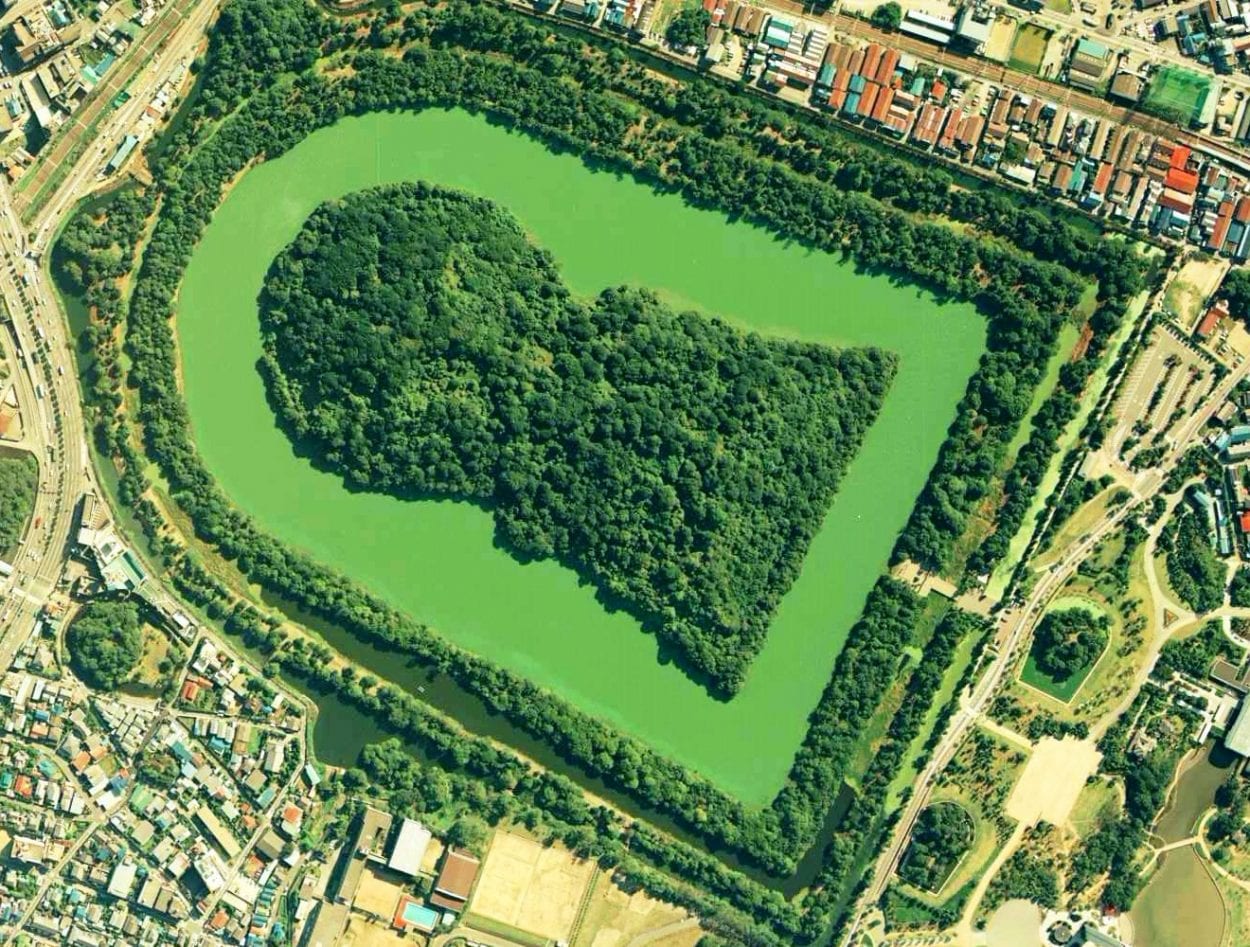Researchers from the Politecnico di Milano have analysed the Japanese Kofun keyhole burial mounds, revealing new insights into the orientation of the monuments.
The tradition of constructing Kofun tombs started during the late 3rd century AD, with the most common form being known as a “zenpō-kōen-fun”, which are distinctively shaped like a keyhole, having one trapezoid end and one circular end mound.
Many Kofun measure several hundred metres across and feature a surrounding moat that was protected by terracotta figurines known as haniwa, to substitute real world objects and display the wealth and status of the individual interred.
Access for exploratory excavations of the Kofun monuments is generally restricted, so the researchers used high resolution satellite imagery as part of a new study published in the scientific journal “Remote Sensing”.
The study focused on the orientation of over 100 Kofuns, revealing a correlating alignment towards the arc of the rising sun, associated with the Goddess Amaterasu that the Japanese emperors linked to the mythical origin of their dynasty. Amaterasu is one of the major deities (kami) of Shinto, the ruler (or one of the rulers) of the heavenly realm Takamagahara and the mythical ancestress of the Imperial House of Japan via her grandson Ninigi.
The satellite imagery also indicates a strong connection of the Kofun entrance corridors with the sky arch, where the Sun and Moon are visible every day of the year.
Researchers from the study said: “The orientation of the imperial tombs towards the Sun does not happen by chance and appears to follow the Japanese imperial tradition. In fact, the mythical origin of the dynasty of the Japanese Emperors considers them as direct descendants of the Sun Goddess Amaterasu.”
Header Image Credit : National Land Image Information (Color Aerial Photographs), Ministry of Land, Infrastructure, Transport and Tourism – GFDL License





